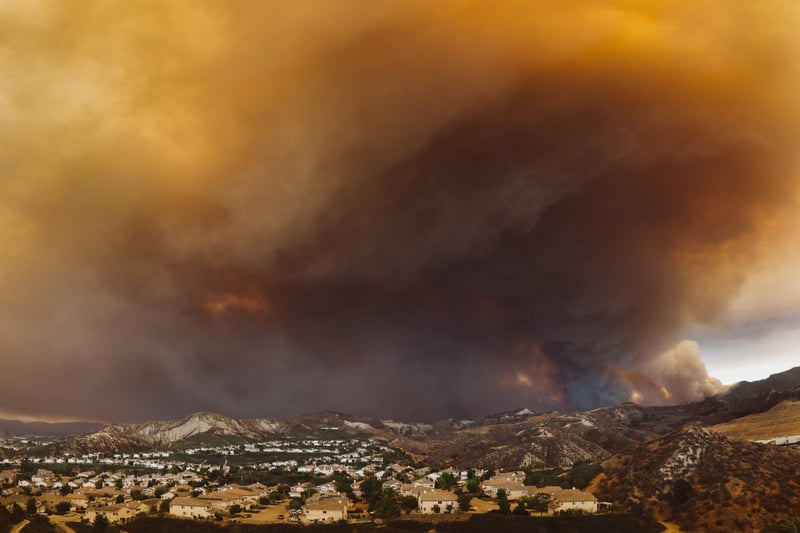ATTENTION ALL CUSTOMERS:
Due to a recent change in our pharmacy software system, all previous login credentials will no longer work.
Please click on “Sign Up Today!” to create a new account, and be sure to download our NEW Mobile app!
Thank you for your patience during this transition.
Get Healthy!

- Posted September 20, 2023
Wildfire Smoke Is Reversing Recent Clean-Air Gains Across the U.S.
When Canadian wildfire smoke shrouded the New York City skyline and spread to parts of New England this summer, millions of East Coast residents saw firsthand just how pervasive it can be.
Now, a new study quantifies exactly what wildfire smoke is doing to hard-fought gains in cleaning up the air, even in Eastern states not typically affected by wildfires.
"Since 2000, there's been enormous progress on improving air quality throughout much of the contiguous U.S., however around 2016 those declines in PM2.5 began to stagnate or even reverse in some states,"said study author Marissa Childs, a postdoctoral fellow at the Harvard University Center for the Environment.
Wildfires release fine particulate matter, or PM2.5, into the air, driving pollution. These tiny particles can travel deep into the lungs and bloodstream and trigger an asthma attack, heart attack or strokes, among other risks.
Specifically, wildfire smoke affected PM2.5 trends in nearly 75% of the 48 contiguous states since 2016, erasing nearly 25% of the air quality gains made since 2000 largely thanks to the Clean Air Act, a landmark environmental law, the study found.
This is the equivalent of four years of air quality progress, Childs said.
So why are things so out of hand?
Climate change has caused warmer, drier conditions that spur longer and more active wildfire seasons, Childs explained.
For the study, researchers analyzed air pollution data from 2000 to 2022 to see how wildfire smoke affected PM2.5 trends.
Between 2000 and 2016, average annual PM2.5 levels dropped in 41 states throughout the contiguous United States. But wildfire smoke either slowed or reversed air quality trends in 35 states since 2016.
"The effects were detectable in states all the way to the East Coast of the U.S., and previous research has primarily identified the effect of wildfire smoke on air quality in the Western or Northwestern U.S.,"Childs said.
The study was published Sept. 20 in the journal Nature.
The research provides important new details on air pollution trends from wildfire smoke, said William Barrett, national senior director of clean air advocacy at the American Lung Association.
"More broadly, it further illustrates the challenges posed by climate change in terms of maintaining hard-fought clean air progress, and notes that these impacts are often not geographically isolated," said Barrett, who reviewed the findings.
Climate change is amplifying a wide range of health risks, he said.
"There's no question that climate change is a major risk to public health coming in many forms such as wildfire smoke layering on top of local pollution sources or increasingly devastating extreme weather events,"Barrett said.
While reversing these trends calls for coordinated efforts at the local, state and federal levels, there are ways to protect your health from the damaging effects of wildfire smoke and air pollution.
For starters, Barrett suggested checking Airnow.gov or more local agencies for information on current or forecasted air pollution in your area.
"Staying indoors when pollution is elevated, monitoring for any symptoms related to your health condition and keeping a close eye on kids are important steps when your area is affected by smoke,"Barrett said.
James Schwab, a retired professor and senior research associate at the Atmospheric Sciences Research Center at the University at Albany in New York, said the new study provides important information on trends of PM2.5 levels in the air.
"It's definitely concerning,"Schwab said, adding there is no safe threshold of PM2.5. "It is dangerous at any level, and the more PM2.5, the greater the health risks and pollution."
More information
The American Lung Association has more on how to protect your health during wildfire season.
SOURCES: Marissa Childs, PhD, postdoctoral fellow, Harvard University Center for the Environment, Cambridge, Mass.; William Barrett, senior director, clean air advocacy, American Lung Association, Sacramento, Calif.; James Schwab, PhD, retired professor and senior research associate, Atmospheric Sciences Research Center, University at Albany, State University of New York; Nature, Sept. 20, 2023






